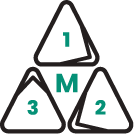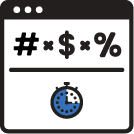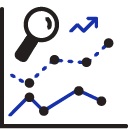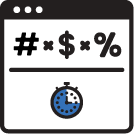Dear Sales Leaders,
Is your sales organization better this year than last? Are your sellers more efficient? More effective? More consistent? Are they better forecasters?
For most sales leaders the honest answer to this question is either ‘No’ or ‘I don’t know.’
There are a variety of potential reasons. Perhaps there’s been significant turnover or there's been key departures, and you’re dealing with a less tenured team. Or there have been changes to the product portfolio which has required some retraining which is impacting your execution.
The other possibility is that the organization has not properly addressed the developmental needs of the sales organization and as a result, their ability to execute has remained flat.
This happens. A lot. But why would an organization fail to address the needs of this vital business function?
I believe there are three basic reasons why this happens.
-
1) There’s a lack of insight into what specifically is needed.
-
2) There’s a lack of consensus around the plan.
-
3) There's a lack of commitment to executing the plan.
Let’s start with reason number one: the lack of insight.
Why do sales organizations lack the insight into the developmental needs of their people?
From my own sales experience, as well as what I've observed with clients, one of the biggest obstacles is the lack of quality sales data. Sales organizations are generally very good at collecting data such as pipeline, forecast and closed. But they generally struggle with quality data such as sales velocity, conversion rates, and forecast accuracy. While they may use their existing data (including other sources of data* that provide evidence of sales engagement), to be able to surface some of this information it’s generally not considered highly accurate. * Note that the number of “other sources of data” will continue to increase which can be a valuable source of macro insights. Advanced analytics can tell you that X% of forecasted deals that closed on time had a customer engagement frequency of Y. But if the goal is to elevate team performance, then that’s not as good as knowing that sellers who failed to thoroughly execute the executive alignment stage and failed to secure the 4 key points of alignment, were 8 times more likely to have their deal slip.
One of the biggest root cause issues for quality sales data is that the organization's sales playbook is not sound. Language is vague. Sales stages and exit criteria are not clearly defined. As a result, things are fuzzy. It’s unclear which stage an opportunity should be in. Unclear definitions and unclear sales stages lead to a lack of clarity for both sellers and sales leaders, which makes manager inspection and coaching more difficult. Sales rigor and CRM hygiene suffer, leading to inconsistent execution and fuzzy data. Unfortunately, from what I’ve observed, this is more the rule than the exception.
So how do we address this fuzziness? How can we improve the rigor and thus the quality of our data? Here are a few steps you can take.
First, you must be crystal clear on your definitions. This begins with the language that you use, and the definitions of your critical sales success factors. This is of course where MEDDIC lives. If the definitions of your sales success factors (ie: Metrics, Economic Buyer, Decision Criteria, Decision Process, Implicated Pain, and Champions) are not crystal clear, then everything else you build will be fuzzy. Addressing this issue requires a coordinated commitment to defining your success factors (MEDDIC), and then through training and manager reinforcement, establishing and embedding these definitions into your sales landscape. This is your common language.
With your common language in place, we can now move on to the sales playbook which is built upon that common language. The sales playbook is defined by a sequence of logical sales stages, each stage containing a fair exchange of value with your customer, and clear success criteria. A simple example of that "fair exchange" may be that the customer receives an education about an opportunity to improve a critical business process, and in return the seller gains insight to the customer's strategic priorities and decision process. In enterprise SaaS sales we commonly see the following or similar sales stages: Profile, Discovery, Scope, Executive Alignment, Proof, Negotiate, Close. And this can be followed by post sales stages: Plan, Deploy, Adopt, Value Realization, Expand / Renew. For sales organizations that are lacking well defined sales stages, I would encourage you to start by identifying and breaking down your best run sales cycles. You can also check out John McMahon's "The Qualified Sales Leader," which goes into some details on sales stages. For those with at least a partially defined sales playbook, we go through a process of "playbook hardening." We do this by overlaying MEDDIC to ensure that every aspect of sales execution is addressed and that no corners are being cut. Completely addressing every element of MEDDIC/MEDDPICC over the span of your sales cycle is the definition of quality execution. (Please reach out if you have questions or need help here).
Let's fast forward to the point at which you now have your hardened sales playbook in place. Congratulations! Managers are expertly trained and reinforcing the sales playbook’s proper use. Sellers are being coached and there is an increasing rigor to sales execution. Well defined and repeatable sales activities (new business meeting, discovery workshop, technical deep dive, executive alignment meeting, proof of value) are being executed with consistency, which is leading to more consistent outcomes. Your sellers are now capable of definitively stating the sales stage of each opportunity. They are also becoming much more adept at identifying the opportunities where that success criteria is not being met, helping them to be more objective in prioritization and qualifying opportunities in or out.
Sales managers are now equipped with crystal clear guidelines on where opportunities should reside, and are responsible for inspecting the quality of execution to make sure that opportunities are not being prematurely advanced. There’s an observable dynamic that organizations will begin to see. When rigor and discipline are applied to the early stages (meaning that all sales stage success criteria are being met), that rigor and discipline will tend to perpetuate into the mid and later stages. Sales leaders operating in this kind of environment understand the power and importance of early stage deal reviews.
A simple example of this is a case where a collective focus was placed on consistently conducting high quality discovery workshops. Those high quality discovery workshops translated into stronger Champion development which led to better execution of the executive alignment stage and this in turn resulted in improved forecast accuracy. Rigor early (properly executed discovery workshop), translated into downstream results.
The organization is now operating with clear language and well defined sales stages that are being managed and inspected by sales leaders. As a result, there is a consistency of execution, which is to say that conversion rates are becoming much more predictable. As a bonus benefit, best practices are being identified and shared. The increased rigor in execution and management oversight manifests in the (much less fuzzy) data, which is now providing real insights. The weighted forecast becomes a much more reliable predictor of success. Opportunities progress through this rigorous process and become increasingly well qualified, thus providing a significant boost to resource efficiency, close rates, and forecast accuracy.
Higher quality data can include conversion rates, sales velocity, and forecast accuracy which can all become trusted and useful data points leading to real insights and actionable opportunities for enablement.
When we help sales organizations generate sales insights, we look at insights in two dimensions, horizontally across the stages, and vertically within each stage. Horizontally we can look at how effectively the elements of MEDDIC are executed. Vertically we can look at the execution of specific sale stages and events, including new business meetings, discovery, workshops, or proof events. With quality data we'll be able to surface needs across both dimensions. And once those needs are identified, there can be an assessment of the need and how best to address it. Is it a training issue? Is it a resource issue? Is it a messaging issue?
The reality is that while what I’ve laid out here should seem very logical, it requires proven frameworks, hard work, strong leadership, and a commitment to sales rigor and discipline, but when followed will lead to high-quality data and insights that can be leveraged to address sales execution challenges and elevate performance.
Let's move past the data quality issue and onto the remaining two reasons for why organizations fail to address the developmental needs of their sales organizations
Reason number two was the lack of consensus around what needs to be done. This issue is largely addressed thanks to the fact that we now have quality data and insights. The essential layer that needs to be added is sales enablement governance or steering. This is the commitment and execution of a quarterly cadence with cross functional representation from sales leadership, revenue operations and sales enablement with executive sponsorship. The purpose of this function is to gain consensus around the developmental opportunities and the plans to execute.
With the steering function in place, there should be no confusion regarding the developmental plans of action. These plans of action will include the direction and coaching so that the field sales leaders are properly equipped to deliver the training and coaching to their teams and monitor the application of the training in the field. Furthermore, now that we have quality sales data, we have the ability to incorporate a measurement plan as part of our sales development plan, enabling the team to measure the impact of the sales development activity.
As with so many things in life, it comes down to the fundamentals. Clear sales language, and a clear, well-defined playbook that is adhered to with confidence and management oversight leads to good sales hygiene, and quality data, which in turn, helps the playbook to be refined over time, further boosting performance. And when the quality data is turned into insights and shared cross functionally, organizations can establish clear consensus on developmental plans that will enable the organizations to clearly say that they are leveling up their execution, and that their performance is clearly improving quarter by quarter and year by year.
As we approach the new year, I wish you health, prosperity and increased sales performance.





.png)





.png)
























%201.png)








.png)

-1.png)
.png)
.png)